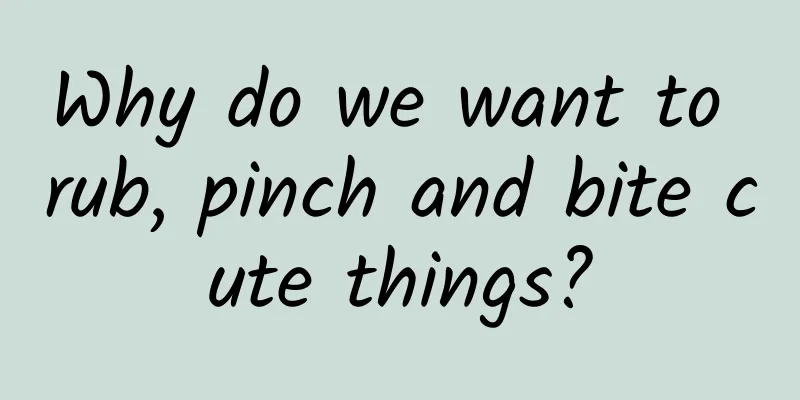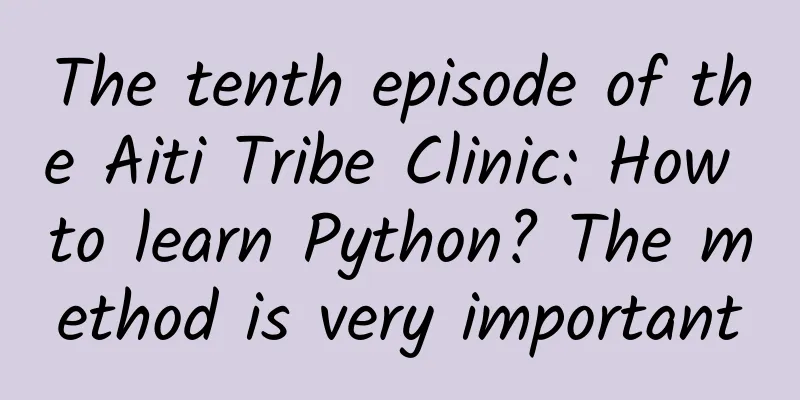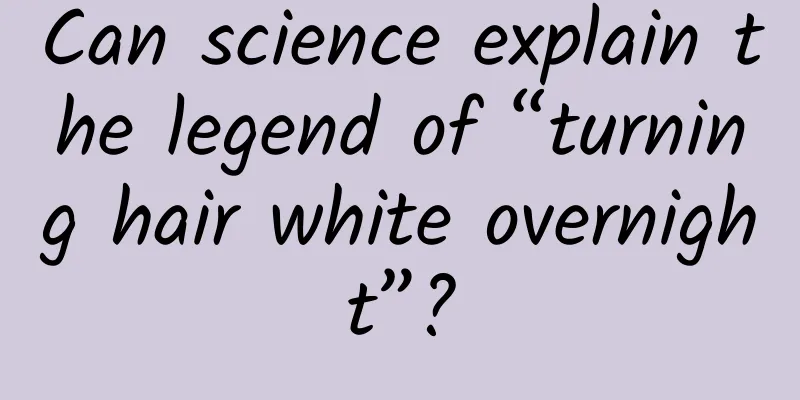Why do we want to rub, pinch and bite cute things?

|
© Tuan Tran/Getty Leviathan Press: This is indeed a bit counterintuitive - it stands to reason that when we see very cute people or animals, we will feel love, and the resulting care feelings are natural, but (hard) rubbing, pinching and biting cute objects can be regarded as slightly aggressive behavior to some extent. Why is this? Even if this "cute aggression" is a coolant for the emotions above, as described in the article, it still seems to be unable to explain the baseline of returning to a controllable state - because we have reason to believe that the so-called return to the baseline is for the next more intense rubbing... Have you ever been in this situation? You see something incredibly cute—a baby, a puppy, or a kitten—and you're suddenly seized by a strong desire to twist, pinch, press, or even bite it. You clench your hands, clench your teeth, and maybe even let out an audible growl; you feel overwhelmed by the sudden aggression. If so, you're not alone. © Tinybeans This reaction is called cute aggression, and about 70% of adults experience it. But why? At first glance, cute aggression seems to be an evolutionarily maladaptive response, increasing the chances of harming cute humans and baby animals, which we are supposed to care for. However, recent behavioral and neurological research suggests that this seemingly paradoxical response may be more psychologically useful than it seems. Although the term “cute aggression” was first coined in English in 2013, the phenomenon is well known and many languages even have a word for it: for example, “gigil” in Tagalog, “geram” in Malay, “gemas” in Indonesian, and “muchlovat” in Czech. In behavioral terms, psychologists say that cute aggression is a dimorphous response , in which positive experiences trigger reactions that are usually associated with negative emotions, and vice versa.[1] © Gfycat Common dimorphic reactions include crying when watching a happy or romantic scene in a movie, or laughing uncontrollably when frightened or stressed. When faced with a cute baby or animal, the expected reaction should be an overwhelming desire to care for or protect the creature. In fact, the concept of cuteness and the instinct to care for cute things have been deeply rooted in our brains during evolution. In 1943, German animal behaviorist Konrad Lorenz proposed what he called the “kindenschema,” a set of physical features that our brains interpret as “only babies have” and that trigger strong nurturing instincts. These features include a large, round head, a small chin, a small mouth, a small nose, large ears, and large, low eyes. The more a face fits this archetype, the more cute we find it.[2] © PNAS Our natural attraction to the baby schema even permeates the way we treat domestic animals. For example, over thousands of years, people have selectively bred dogs to look more and more like puppies, with floppy ears and rounder features—an adult Labrador looks much younger than a wolf of the same age. The arts and entertainment industries have also taken note of this principle, with cartoon characters like Mickey Mouse and characters in Japanese anime and manga gradually evolving increasingly childish features, such as round heads and disproportionately large eyes. But if we are wired to care for and protect cute things, why do many of us still want to pinch them? In 2013, a Yale University research team led by neuroscientist Oriana Aragón conducted the first formal study on cute aggression, and it was in this study that they coined the name “cute aggression” for this response.[3] Aragon and her colleagues asked 105 online participants to fill out a questionnaire that included questions like "Am I likely to cry with joy when I see someone?", "Am I likely to laugh when I am angry?", "If I were holding a very cute baby, I would feel the urge to pinch her/his chubby legs?" and "Am I the type of person who would say to a cute child, 'I'm going to eat you up!' through gritted teeth?" © Gifer The study found that about 64% of the respondents admitted to having the urge to pinch cute babies or cute animals, and 74% admitted that they had actually acted on the urge. In a follow-up study, the research team invited 90 participants into the laboratory to watch slides of cute, funny, or neutral animals. While the participants watched the slides, the researchers gave them a piece of bubble wrap and asked them to squeeze the bubble wrap at will. Those who watched the cute slides squeezed an average of 120 bubbles, compared to an average of 100 bubbles for those who watched the neutral slides and 80 bubbles for those who watched the funny slides. This provides empirical evidence for an aggressive response to cuteness. As for why this might be the case, Aragon and her colleague Rebecca Dyer hypothesize that cute aggression may serve a regulatory function, allowing people to better control and apply their nurturing instincts. Other neurological studies have shown that cute stimuli activate the brain's mesocorticolimbic, or reward, system, and in some cases, this activation can be overwhelming. "We think it's associated with high positive emotions, it's goal-directed, it's almost a sense of loss of control. You know, that 'you can't stand it', 'you can't handle it', that kind of feeling," explains Rebecca Dell. © Essential Baby According to neuroscientist Katherine Stavropoulos, in a caregiving situation, this kind of emotional overload can have adverse effects on the child being cared for: “A baby can’t survive on its own, but if all you can think about is how cute the baby is and how much you love her, then you can’t care for her well, and the baby can’t survive.” Therefore, Aragon and Dell believe that cute aggression may suppress these strong positive emotions and prevent people from falling into the vortex of positive emotions: "Maybe the way we deal with highly positive emotions is to put a negative 'tone' on them in some way that regulates our state, calms us, and lets that positive energy go. It's possible that these expressions can help us get those emotions out and help us calm down a little bit quicker from the 'baby-crazy' state." To determine whether this conditioning effect actually exists, Stavropoulos and her colleagues at the University of California, Riverside, conducted an experiment in 2018[4] in which 54 participants were shown photos of animals and babies, some of which looked younger and others older; some of the photos were also manipulated to make the subjects look particularly cute. Before the experiment, participants were asked to fill out a questionnaire similar to the one in Aragon and Dell's study, asking whether they had experienced common dimorphic reactions in the past; after viewing the photos, they were asked to describe their emotional reactions to the images of babies and animals. The researchers then had the participants complete a neutral task, such as searching for a word, before having them view another set of photos. Stavropoulos hypothesized that participants who reported experiencing a bimodal response in the past would not only have a stronger emotional response to the images, but would also experience a less intense emotional response during the second viewing. The results seemed to bear this out: “Participants who expressed cute aggression calmed down from the ‘cuteness overwhelm’ state more quickly. [But] it’s possible that they just returned to baseline because their emotions went over baseline more than those who didn’t respond to cute aggression, so it’s really hard to draw a clear conclusion.” To investigate the neurological basis of the cute-aggression response, in the next step of the experiment, Stavropoulos hooked the participants up to an electroencephalogram (EEG) monitor and monitored their responses as they viewed the baby and animal images. She observed a strong event-related potential (ERP) signal that seemed to confirm the findings from the previous phase of the study, which was stronger in those who were prone to other bimodal responses and weaker on average during the second round of viewing. This seems to suggest that the cute aggression response is part of a complex “ emotional tug-of-war ” designed to keep the brain functioning smoothly in the face of powerful emotional stimuli: "It's not just reward, and it's not just emotion. Two systems in the brain are involved in this experience of cute aggression. The 'appetizing,' appetizing side of the reward system is associated with that forward momentum -- that anxious feeling, that pursuit, that impulsiveness. So when we see this expression of aggression, it could be a manifestation of that impulsiveness. It's signaling that you want to get to that baby." However, Stavropoulos believes cute aggression may play a very different role: “The original idea was that it might have something to do with emotional stability, but we have much stronger and more consistent evidence that it’s something else — a powerful communication signal … [it’s] a reminder of how much stronger you are than this cute little creature. ” Stavropoulos further suggests that the negative facial expressions elicited by cute aggression responses may convey to infants that there is someone who cares about their well-being and is likely to take care of them. © Gifer But whatever the ultimate purpose of the cute aggression response, the fact that it’s not a universal experience is what really fascinates her: “When I describe this to people, I usually find that about 70 to 75 percent of them will nod their heads immediately and know exactly what I’m describing and have experienced it themselves. They’re like, ‘That’s weird; I’m probably the only one who feels this way. I don’t want to hurt it. I just want to eat it.’ The other 25 to 30 percent will look at me in a weird way and have no idea what I’m talking about or why anyone would feel this way. ” The remaining 25%-30% may also provide valuable insights into other more serious psychological disorders, such as sociopathy, psychopathy, or postpartum depression, which all involve difficulty feeling empathy or feeling a nurturing instinct. Cute aggression responses may also help explain some aspects of autism, as Stavropoulos explains: “There’s a lot of literature about people with autism who have service dogs and have great success, or who have horses that they really connected with and that helped them learn about society. Maybe they feel a strong urge to care but they don’t feel overwhelmed by it, and that’s their advantage.” The takeaway from all this, however, is that, although you might find the cute aggression response strange, it’s completely normal. “We don’t have a bunch of budding sociopaths in our study to worry about,” Rebecca Dell assures us. So go ahead and give that cute little puppy a squeeze. You know you want to. References: [1]pubmed.ncbi.nlm.nih.gov/25626441/ [2]www.pnas.org/doi/10.1073/pnas.0811620106 [3]journals.sagepub.com/doi/full/10.1177/0956797614561044 [4]www.frontiersin.org/articles/10.3389/fnbeh.2018.00300/full By Gilles Messier Translated by Kushan Proofreading/Rabbit's Light Footsteps Original article/www.todayifoundout.com/index.php/2022/07/why-do-we-want-to-squeeze-bite-pinch-cute-stuff-so-badly/ This article is based on the Creative Commons License (BY-NC) and is published by Kushan on Leviathan The article only reflects the author's views and does not necessarily represent the position of Leviathan |
<<: Monkey stories: The Three Kingdoms of Sichuan golden monkeys
Recommend
Solved the question that troubled me for many years when I was a child - Why does popping candy "explode"?
When we were young, eating snacks was probably th...
How to do free (low cost) promotion online (Part 2)
The previous article "How to do free (low-co...
How many Western elves do you know who are related to "heavy snow"?
It is snowing heavily today. Here are some typica...
Knowing the AARRR model, but still having trouble growing your user base?
No one had ever predicted that a devastating pand...
How much does it cost to customize the Lu'an cosmetics mini program? What is the price quote for Lu'an cosmetics mini program customization?
The launch of mini programs has brought convenien...
Major breakthrough in non-volatile memory: expected to completely replace existing hard drives
Russia's Sputnik News reported on January 16 ...
Who can sing bel canto, do parkour and take care of children in the zoo?
As summer arrives quietly, the golden sunshine em...
Dropped out of school at 18 and joined Google at 22, chatting and laughing with Jeff Dean. Is a bachelor's degree really necessary?
There are no fixed answers in life, but Chris Ola...
Planning an excellent communication activity is inseparable from these points
The foundation of communication studies is psycho...
What are the things to note when submitting promotional materials for 360 advertising, and how long does it take for creative review?
How long does a creative review take? In order to...
Heshan SEO training: Summary of 7 principles for website content optimization
From a micro perspective, website content include...
Can WeChat be used like this? Hidden WeChat operations that will open your eyes
WeChat is used every day, but do you know how man...
2020 Private Domain Traffic Full Link Practical Operation Guide
Private domain traffic is a mechanism to better s...
Data analysis gives you a reason for your explosive sales
Data analysis makes your sales boom come true Cou...





![Zbrush course Guyue next generation game props production [good quality]](/upload/images/67cc065cd1a91.webp)



